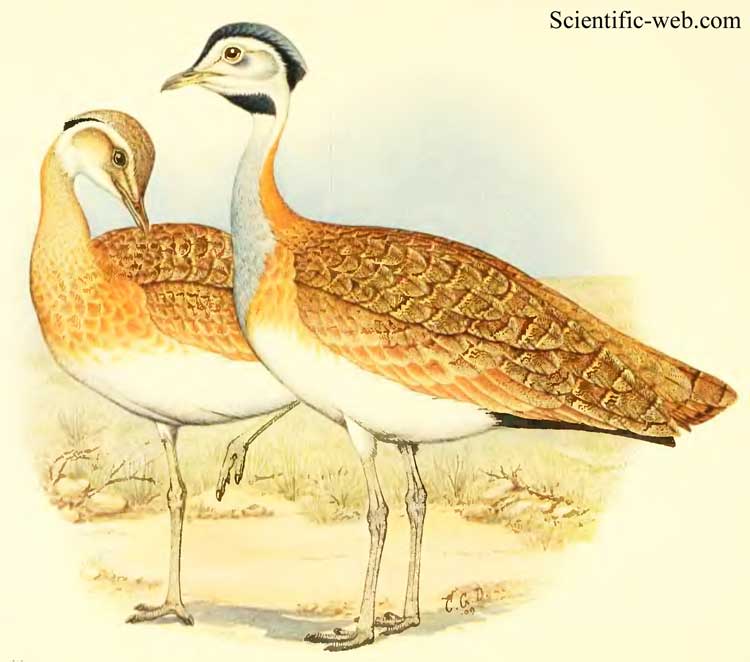Eupodotis senegalensis Cladus: Eukaryota Name Eupodotis senegalensis (Vieillot, 1820) References * Vieillot 1821. Tabl.Encyc.Meth.Orn. 2 livr.89 p.333 Vernacular names
The White-bellied Bustard, White-bellied Korhaan, or Senegal Bustard (Eupodotis senegalensis) is a species of bird in the bustard family.
It is found in Angola, Benin, Botswana, Burkina Faso, Cameroon, Central African Republic, Chad, Republic of the Congo, Democratic Republic of the Congo, Ivory Coast, Eritrea, Ethiopia, Gabon, Gambia, Ghana, Guinea, Kenya, Mali, Mauritania, Niger, Nigeria, Senegal, Somalia, South Africa, Sudan, Swaziland, Tanzania, Togo, Uganda, and Zambia. It lives in various habitats from grassland to open woodland.[1] Description It is rather small for a bustard, 48 to 61 centimetres (19 to 24 in) long. All are tawny brown above and on the breast and white on the belly, with cream-coloured legs; juveniles have light brown necks and heads, and adults have blue-grey necks. The adult female has a grey crown, a brown and buff line below the eye, and black speckling on the throat. The adult male has a black crown, black lines on the white cheeks, a black throat patch, and a pinkish-red bill. The call, often given in the early morning and late evening, has been described as "a very loud, guttural k'whuka WHUKa, k'wuka WHUKa..., or k'warrak, k'warrak...[2] This species is usually seen in pairs or family groups, as young stay with their parents much longer than those of other bustards in the region.[2]. Subspecies Five subspecies are recognized:[3] * E. s. senegalensis (Vieillot, 1820) – southwestern Mauritania and Guinea, east to Central African Republic, central Sudan, and perhaps Eritrea
* BirdLife International, 2004. Eupodotis senegalensis. 2006 IUCN Red List of Threatened Species. Downloaded on 24 July 2007. Source: Wikipedia, Wikispecies: All text is available under the terms of the GNU Free Documentation License |
|

